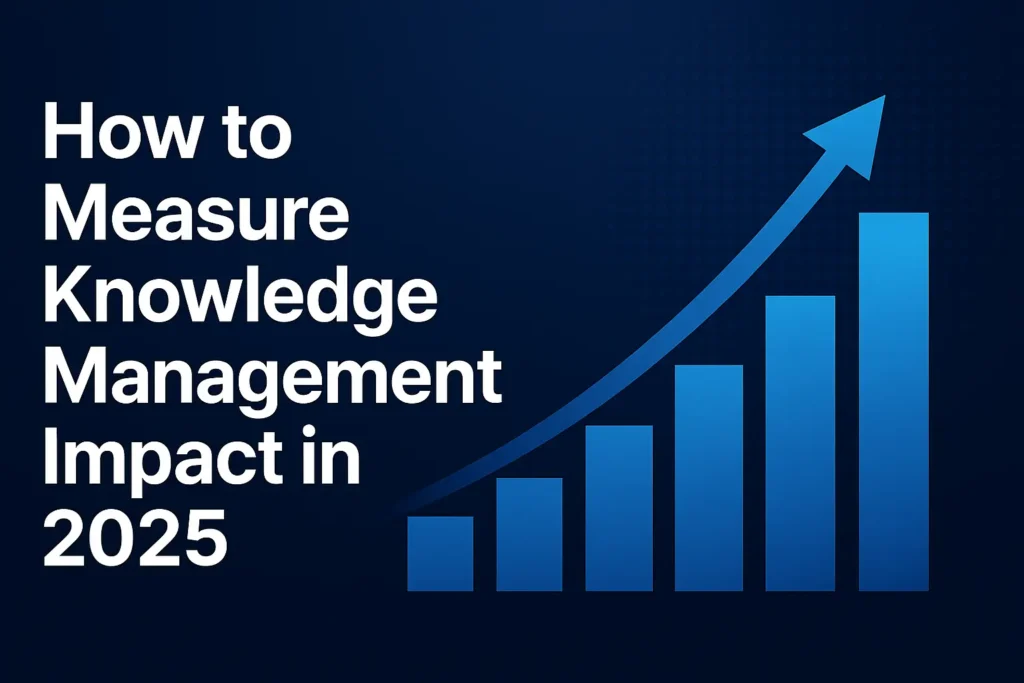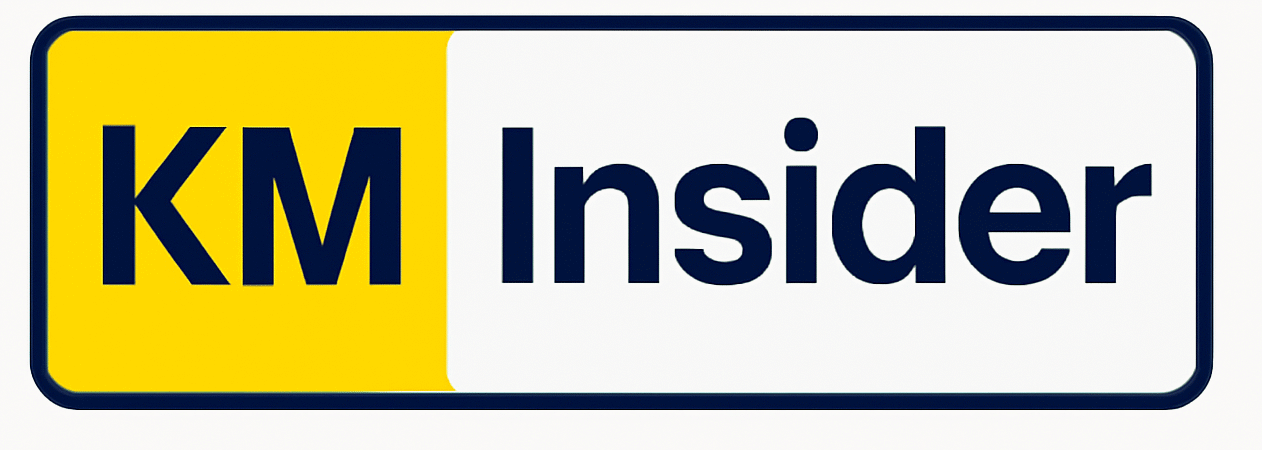Knowledge Management impact is no longer measured by how many documents are stored or how neatly FAQs are arranged. In 2025, KM plays a critical role in how organizations build intelligence, adapt quickly, and operate at scale. But despite the tools, governance, and training invested, one essential question remains: Is it actually making a difference?
If you’re a KM leader, stakeholder, or decision-maker, this guide is for you. We’ll break down what impact means in a modern KM environment, how to measure it effectively, and which metrics matter most in a world shaped by AI and hybrid work.

1. What Do We Really Mean by Knowledge Management Impact?
Before you start collecting metrics, get clear on what you’re trying to prove. KM impact isn’t just about activity (how many documents were uploaded). It’s about outcomes.
In 2025, KM impact shows up in:
- Faster decision-making
- Fewer repeated mistakes
- Higher customer satisfaction
- Shorter onboarding time
- Reduced internal support requests
KM isn’t a backend function anymore—it’s a strategic enabler.
2. Shift From Volume to Value Metrics
Old KM systems used to track things like:
- Total number of documents
- Number of page views
- Downloads or contributions
That’s fine—but it’s not enough. Those are volume metrics. What you want now are value metrics:
- Findability rate – Can employees quickly find what they need?
- Time-to-answer – How long does it take for someone to get a useful answer?
- Reuse rate – Are people actually using the same best practices or templates?
- Accuracy & relevance – How often is the surfaced content correct?
3. How AI is Changing Knowledge Management Impact Metrics
With more orgs using chatbots, generative AI, and semantic search, KM leaders now face a new challenge: measuring machine-assisted knowledge use.
You’ll want to start tracking:
- How often AI-generated answers are escalated
- What percentage of AI responses are accurate (based on human feedback)
- Which internal knowledge assets are most surfaced by AI tools
- Where content gaps exist based on unanswered or repeated queries
Think of AI not just as a tool—but as a user of your KM system.
4. Connect Knowledge Management Impact to Business Outcomes
Your leadership team doesn’t care how many PDFs you uploaded—they care if sales cycles shortened, compliance improved, or support tickets dropped.
To connect KM to outcomes, look at:
- Sales: Are reps using KM to close deals faster?
- Customer service: Are knowledge articles resolving tickets?
- HR: Is onboarding time decreasing with better internal guides?
- Compliance: Are audits smoother due to well-managed knowledge?
Frame your reporting in business terms. That’s how you get buy-in.
5. Don’t Just Measure Use—Measure Trust
One of the most overlooked aspects of KM is trust. You can build a massive knowledge base, but if people don’t trust it, they won’t use it.
Start collecting:
- Feedback on perceived content accuracy
- Sentiment from knowledge ratings and surveys
- Trends in content flagging or reporting
Trust isn’t fluffy—it’s measurable. And in an AI era, it’s critical.
6. Use Layered Reporting for Stakeholders
Not everyone wants the same level of detail. Build layered dashboards:
- For execs: High-level metrics tied to business goals
- For team leads: Functional metrics (search usage, resolution times)
- For KM staff: Operational data (contribution rates, content lifecycle)
The right people seeing the right metrics—at the right time—makes your KM reporting more actionable.
7. Benchmark, Iterate, and Improve
KM impact isn’t a one-time thing. It evolves.
- Set quarterly benchmarks
- Run KM health checks (tools, taxonomy, usage)
- Look for trends across time, teams, and formats
The goal isn’t perfection—it’s progression.
Final Thought: KM is a Performance Layer, Not Just a Content Library
If 2020–2022 taught us that knowledge is essential for resilience, then 2025 is proving that well-measured KM is essential for performance.
So the real question isn’t, “Is our KM system being used?”
It’s: “Is our KM system helping people move faster, smarter, and with more confidence?”
That’s the impact worth measuring. And in 2025, it’s how top KM teams earn their seat at the strategy table.
Frequently Asked Questions
Subscribe to receive notifications for free webinars on Knowledge Management.
